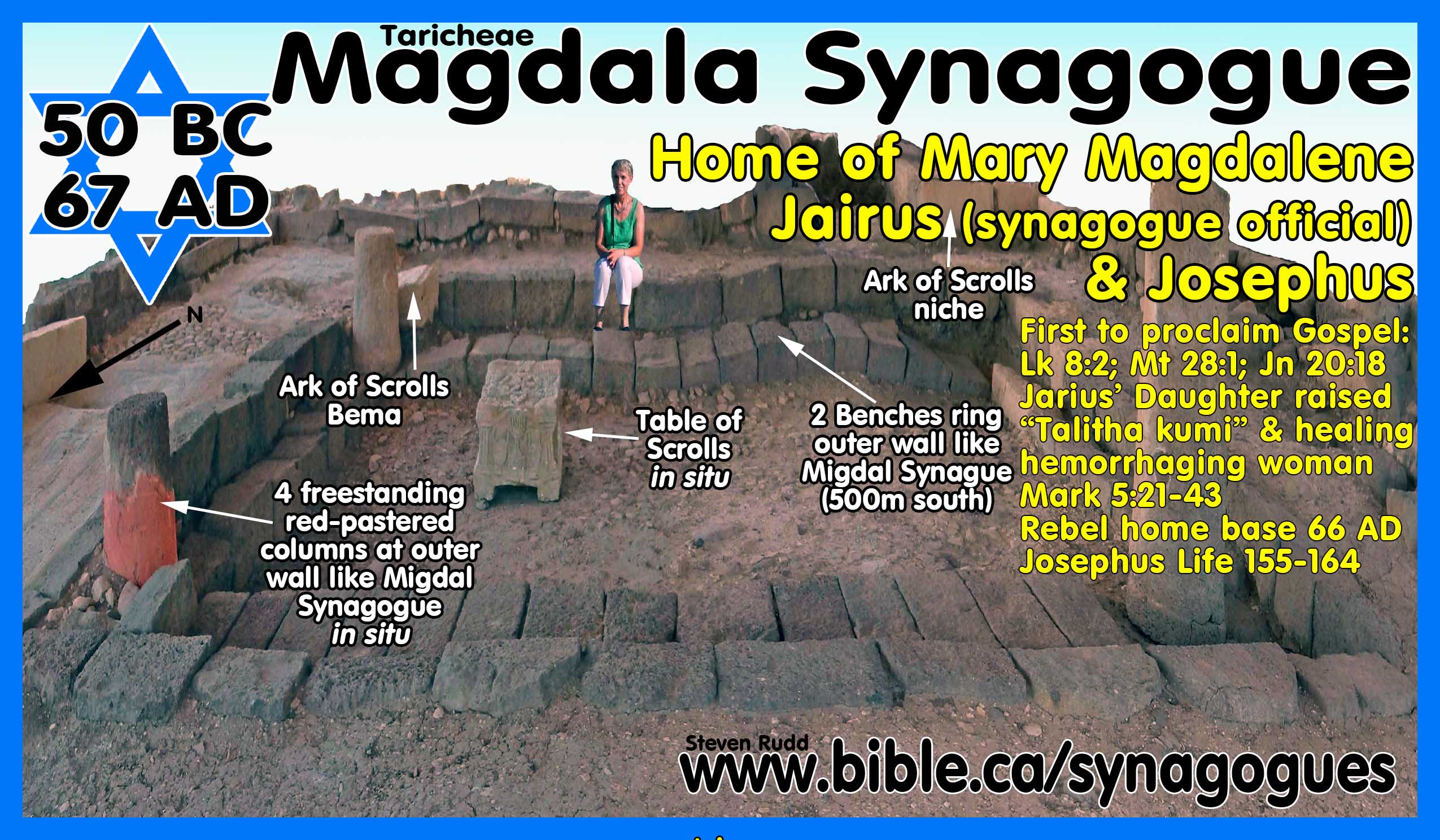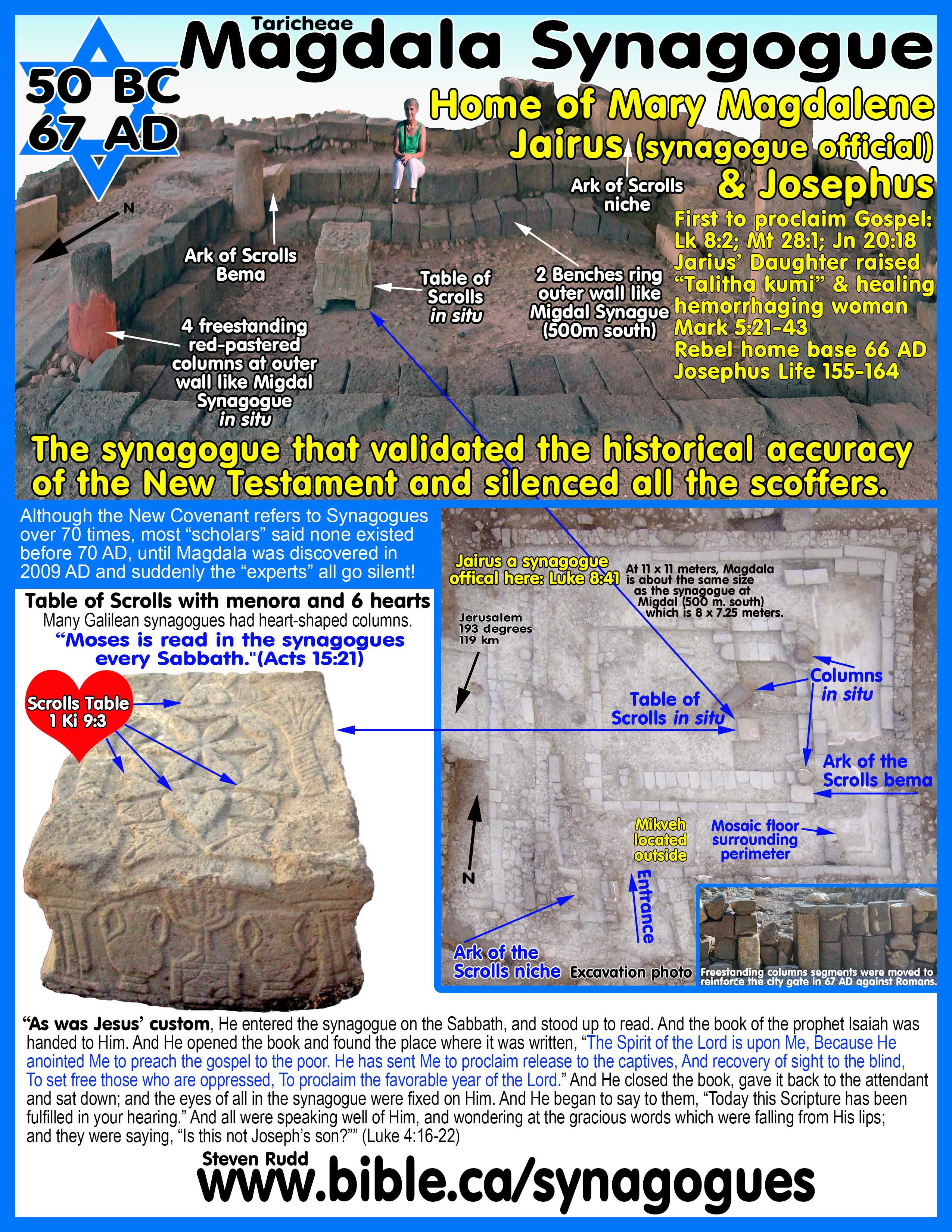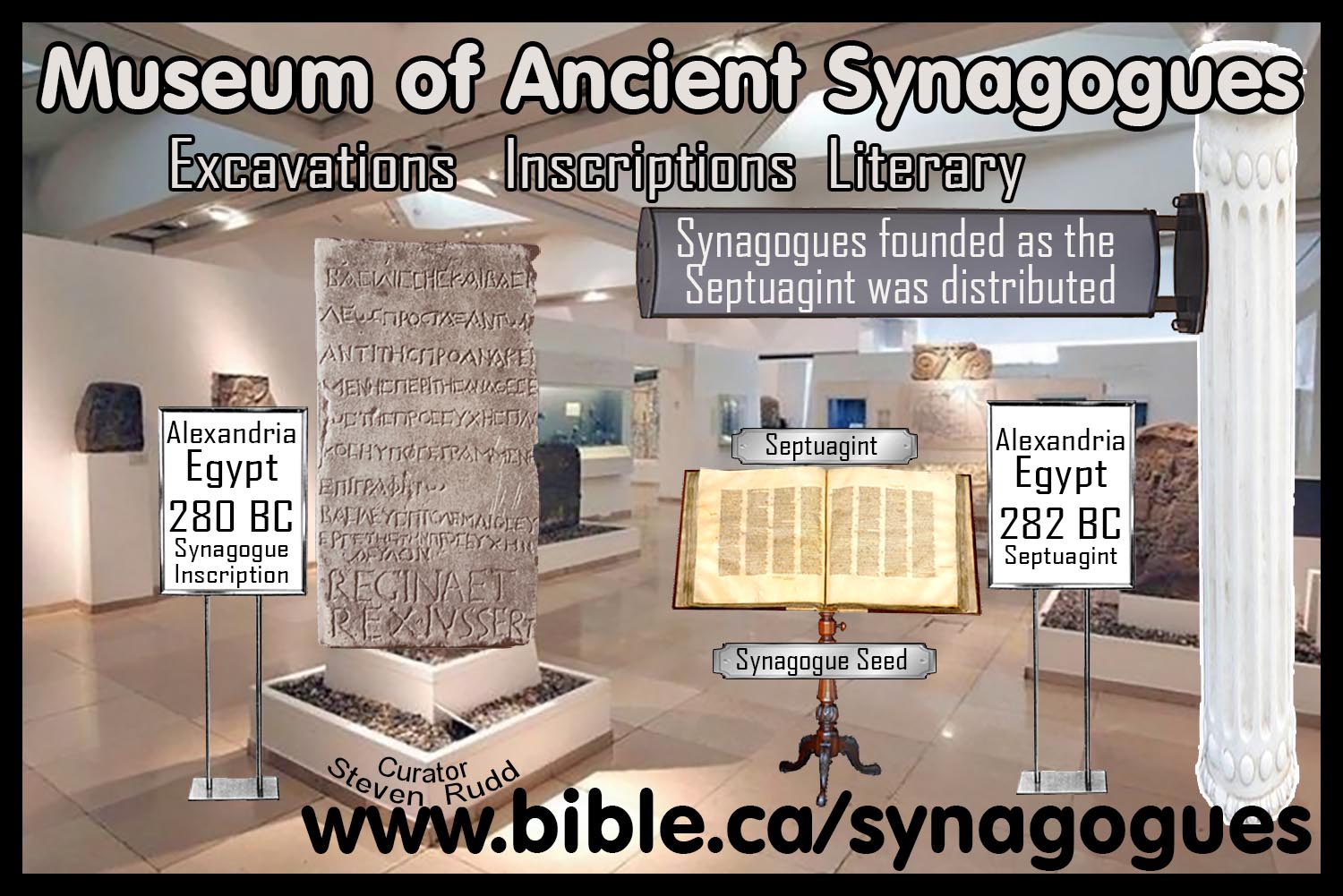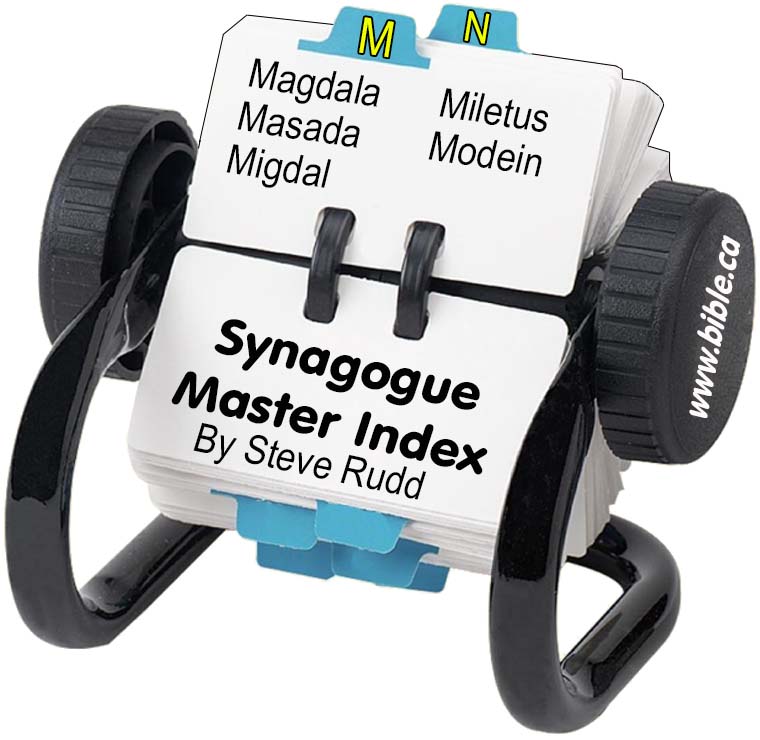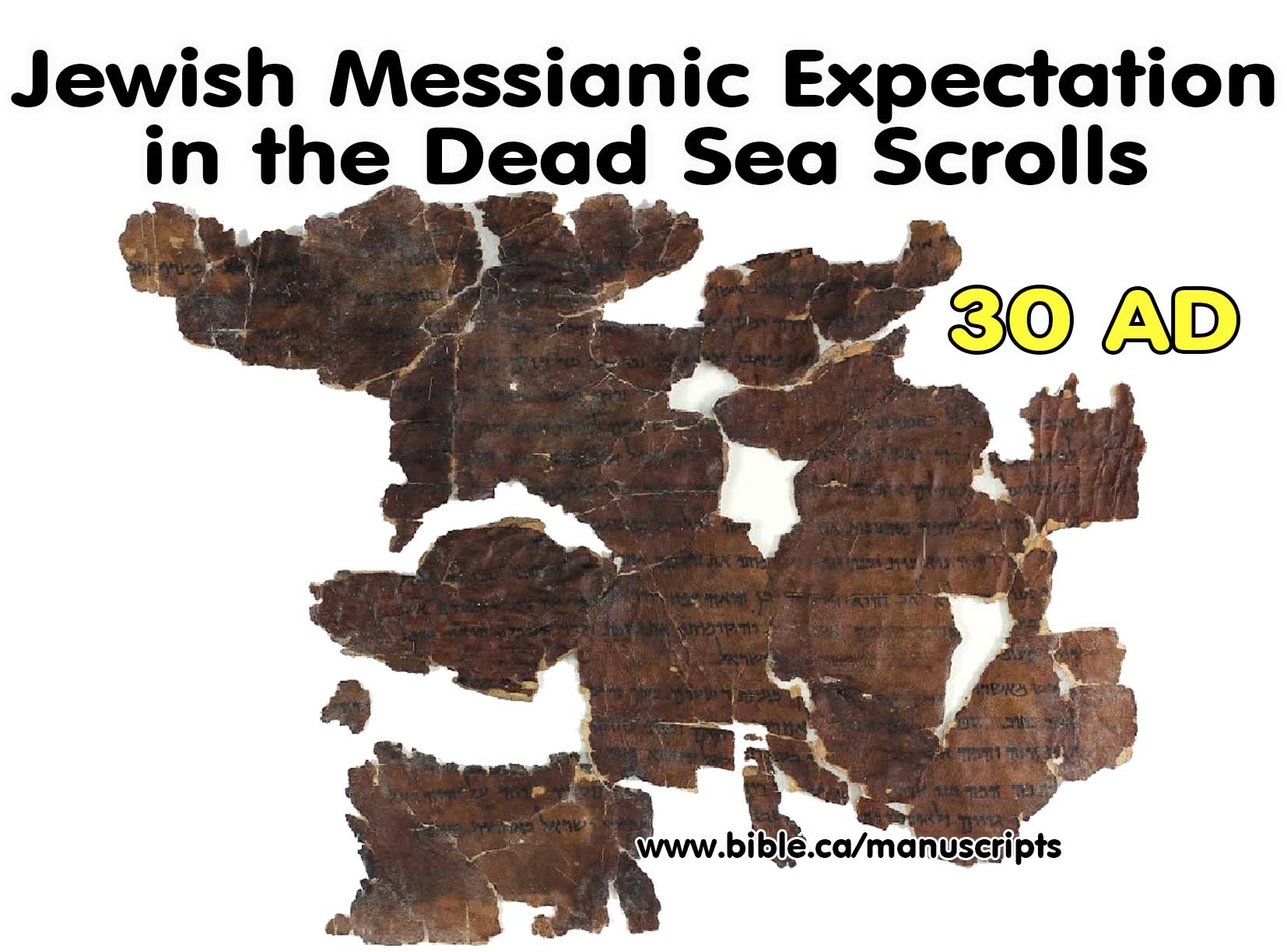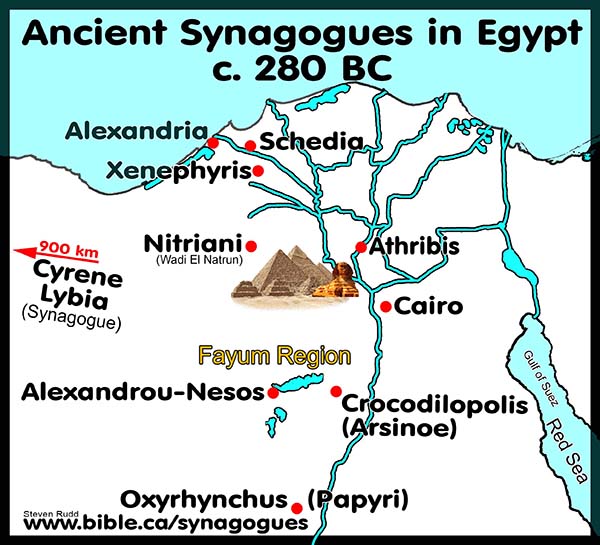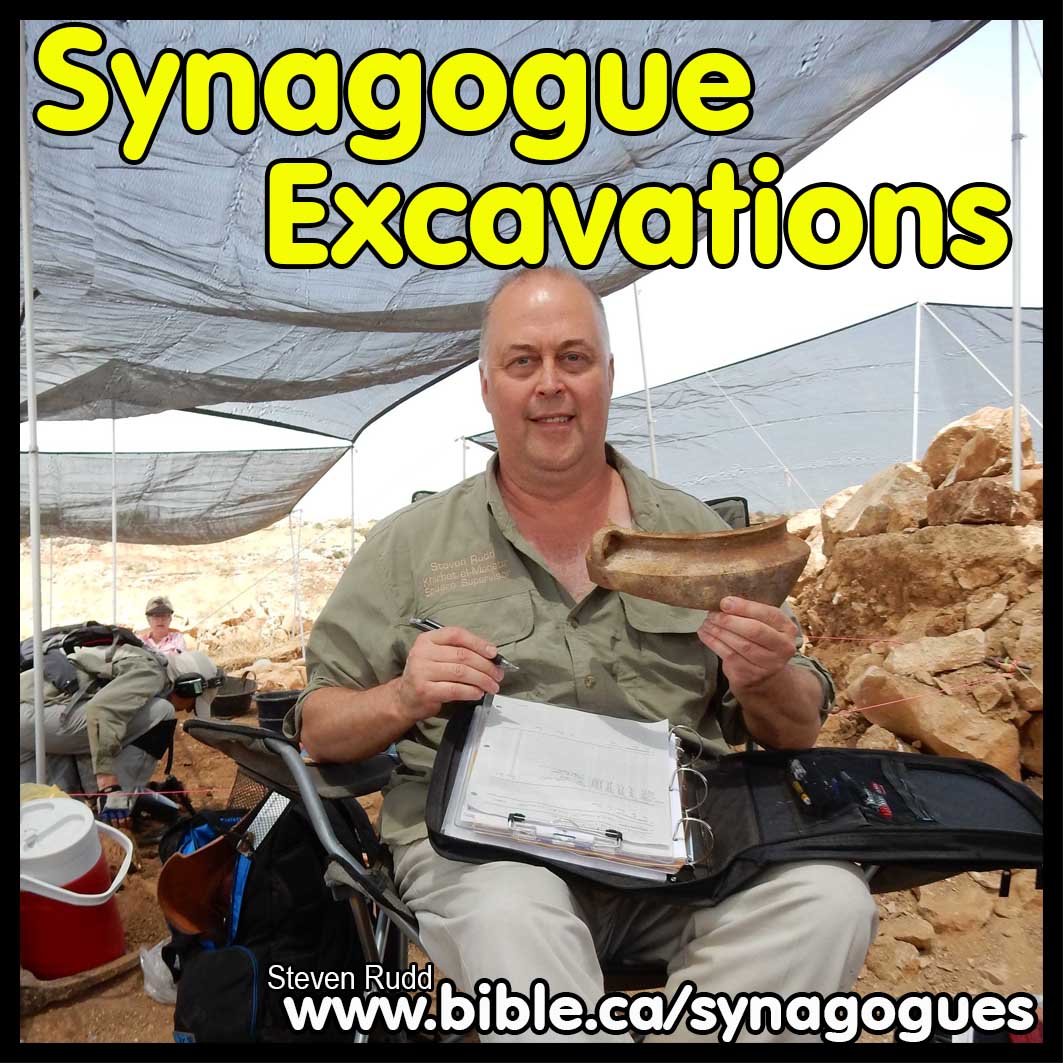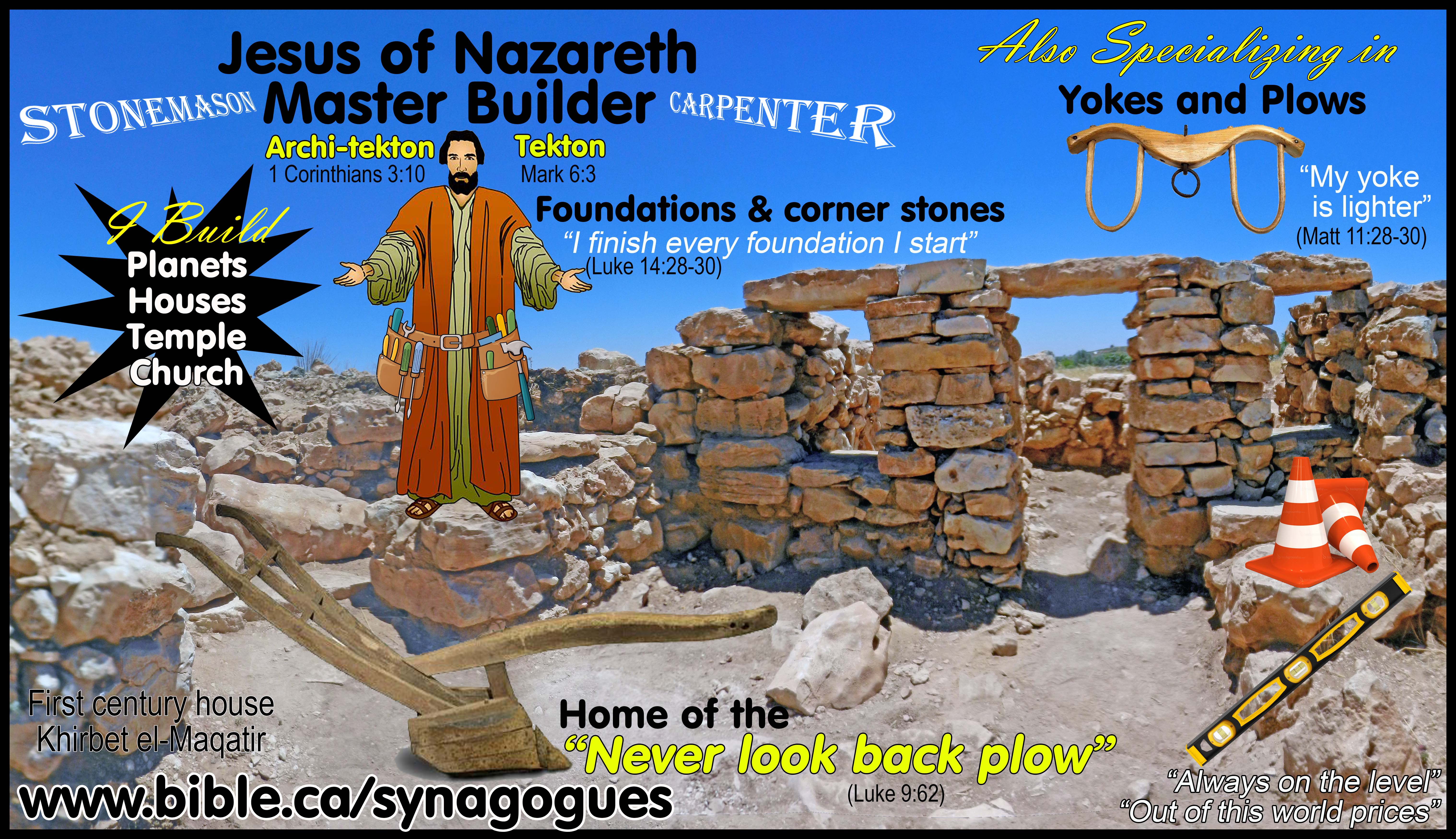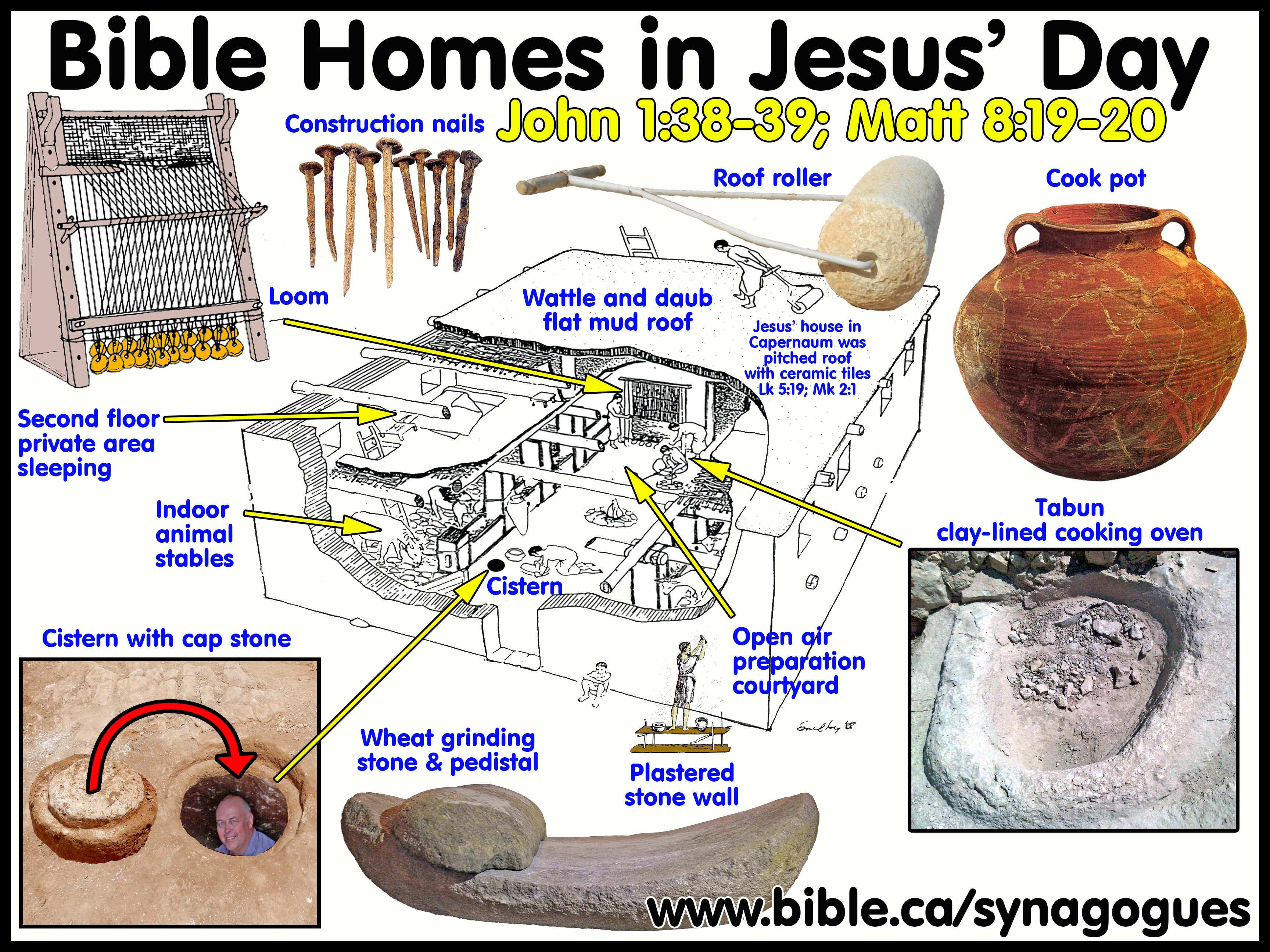First Century Synagogue Top Plans: Magdala 50 BC
Archeological Excavations of Oldest Synagogues in the world
|
Magdala (Taricheae) 50 BC |
1. The synagogue that validated the historical accuracy of the New Testament and silenced all the scoffers.
a. Although the New Covenant refers to Synagogues over 70 times, most “scholars” said none existed before 70 AD, until Magdala was discovered in 2009 AD and suddenly the scoffers all when silent!
2. Magdala is the home town of:
a. Josephus’ rebel home base in 66 AD: Josephus Life 155-164
b. Mary Magdalene who was first person on earth to proclaim Gospel: Lk 8:2; Mt 28:1; Jn 20:18
c. Jesus healed the hemorrhaging woman: Mark 5:21-43
d.
Jairus (synagogue official) Jesus raised Jarius’ daughter “Talitha
kumi”: Mark 5:21-6:1
See also: Organization of Synagogues: Elders,
officials, attendants, Independent, autonomous
A. Earliest Synagogue Occupation Date (SOD) = 50 BC
1. Excavation date: first century
2. Inscriptional date: none
3. Literary date: 50 BC
4. SOD computation system details: Excavation date + Inscriptional date + Literary date = SOD.
B. Synagogue Compass Orientation:
1. Orientation East or towards Jerusalem: No.
2. Compass headings:
a. Compass heading towards Jerusalem: 193 Degrees.
b. Distance to Jerusalem: 119 Kilometers.
3. When an archeologist begins excavating a newly discovered synagogue, the first thing he does to determine if it is a first temple, pre-70 AD installation is determine the orientation.
a. If the synagogue points east it is not pre-70 AD but built after 200 AD.
b. If the synagogue is oriented towards Jerusalem it is not pre-70 AD but built after 200 AD.
4. See Orientation: Early Synagogues did not Point to Jerusalem
C. Bible and other Literary references:
1. Mary Magdalene who was first person on earth to proclaim Gospel:
a. "and also some women who had been healed of evil spirits and sicknesses: Mary who was called Magdalene, from whom seven demons had gone out," (Luke 8:2)
b. "Now after the Sabbath, as it began to dawn toward the first day of the week, Mary Magdalene and the other Mary came to look at the grave." (Matthew 28:1)
c. "Mary Magdalene came, announcing to the disciples, “I have seen the Lord,” and that He had said these things to her." (John 20:18)
2. TWO MIRACLES: Jesus raised Jarius’ daughter healed the hemorrhaging woman: Mark 5:21-6:1
a. See also: Organization of Synagogues: Elders, officials, attendants, Independent, autonomous
b. "When Jesus had crossed over again in the boat to the other side, a large crowd gathered around Him; and so He stayed by the seashore. One of the synagogue officials named Jairus came up, and on seeing Him, fell at His feet and implored Him earnestly, saying, “My little daughter is at the point of death; please come and lay Your hands on her, so that she will get well and live.” And He went off with him; and a large crowd was following Him and pressing in on Him. A woman who had had a hemorrhage for twelve years, and had endured much at the hands of many physicians, and had spent all that she had and was not helped at all, but rather had grown worse— after hearing about Jesus, she came up in the crowd behind Him and touched His cloak. For she thought, “If I just touch His garments, I will get well.” Immediately the flow of her blood was dried up; and she felt in her body that she was healed of her affliction. Immediately Jesus, perceiving in Himself that the power proceeding from Him had gone forth, turned around in the crowd and said, “Who touched My garments?” And His disciples said to Him, “You see the crowd pressing in on You, and You say, ‘Who touched Me?’ ” And He looked around to see the woman who had done this. But the woman fearing and trembling, aware of what had happened to her, came and fell down before Him and told Him the whole truth. And He said to her, “Daughter, your faith has made you well; go in peace and be healed of your affliction.” While He was still speaking, they came from the house of the synagogue official, saying, “Your daughter has died; why trouble the Teacher anymore?” But Jesus, overhearing what was being spoken, said to the synagogue official, “Do not be afraid any longer, only believe.” And He allowed no one to accompany Him, except Peter and James and John the brother of James. They came to the house of the synagogue official; and He saw a commotion, and people loudly weeping and wailing. And entering in, He said to them, “Why make a commotion and weep? The child has not died, but is asleep.” They began laughing at Him. But putting them all out, He took along the child’s father and mother and His own companions, and entered the room where the child was. Taking the child by the hand, He said to her, “Talitha kum!” (which translated means, “Little girl, I say to you, get up!”). Immediately the girl got up and began to walk, for she was twelve years old. And immediately they were completely astounded. And He gave them strict orders that no one should know about this, and He said that something should be given her to eat. Jesus went out from there and came into His hometown; and His disciples followed Him." (Mark 5:21–6:1)
D. Occupation history:
1. Home town of Josephus:
a. “But as for the inhabitants of the city of Tiberias, they wrote to the king, and desired him to send them forces sufficient to be a guard to their country; for that they were desirous to come over to him. This was what they wrote to him; (156) but when I came to them, they desired me to build their walls, as I had promised them to do; for they had heard that the walls of Taricheae were already built. I agreed to their proposal accordingly; and when I had made preparation for the entire building, I gave order to the architects to go to work; (157) but on the third day, when I was gone to Taricheae, which was thirty furlongs distant from Tiberias, it so fell out, that some Roman horsemen were discovered on their march, not far from the city, which made it to be supposed that the forces were come from the king; (158) upon which they shouted, and lifted up their voices in commendations of the king, and in reproaches against me. Hereupon one came running to me, and told me what their dispositions were; and that they had resolved to revolt from me:—(159) upon hearing which news I was very much alarmed; for I had already sent away my armed men from Taricheae to their own homes, because the next day was our Sabbath; for I would not have the people of Taricheae disturbed [on that day] by a multitude of soldiers; (160) and indeed, whenever I sojourned at that city, I never took any particular care for a guard about my own body, because I had had frequent instances of the fidelity its inhabitants bore to me. (161) I had now about me no more than seven armed men, besides some friends, and was doubtful what to do; for to send to recall my own forces I did not think proper, because the present day was almost over: and had those forces been with me, I could not take up arms on the next day, because our laws forbade us so to do, even though our necessity should be very great; (162) and if I should permit the people of Taricheae and the strangers with them, to guard the city, I saw that they would not be sufficient for that purpose, and I perceived that I should be obliged to delay my assistance a great while; for I thought with myself that the forces that came from the king would prevent me, and that I should be driven out of the city. (163) I considered, therefore, how to get clear of these forces by a stratagem; so I immediately placed those my friends of Taricheae, on whom I could best confide, at the gates, to watch those very carefully who went out at those gates; I also called to me the heads of families, and bade every one of them to seize upon a ship, to go on board it, and to take a master with them, and follow him to the city of Tiberias. (164) I also myself went on board one of those ships, with my friends, and the seven armed men already mentioned, and sailed for Tiberias.” (Josephus Life 155-164)
2. In 66 AD, Magdala/Taricheae had a population of 40,000 and had 230 boats anchored in the city port:
a. “Hereupon the people of Taricheae loudly commended him; but those of Tiberias with the rest of the company, gave him hard names, and threatened what they would do to him; so both sides left off quarreling with Josephus, and fell to quarreling with one another. So he grew bold upon the dependence he had on his friends, which were the people of Taricheae, and about forty thousand in number, and spake more freely to the whole multitude, and reproached them greatly for their rashness; (609) and told them, that with this money he would build walls about Taricheae, and would put the other cities in a state of security also; for that they should not want money, if they would but agree for whose benefit it was to be procured, and would not suffer themselves to be irritated against him who had procured it for them.” (Josephus Wars 2.608–609)
b. “Now John was detained afterward within the walls of Gischala, by the fear he was in of Josephus; but within a few days Tiberias revolted again, the people within it inviting king Agrippa [to return to the exercise of his authority there]; (633) and when he did not come at the time appointed, and when a few Roman horsemen appeared that day, they expelled Josephus out of the city. (634) Now, this revolt of theirs was presently known at Taricheae; and as Josephus had sent out all the soldiers that were with him to gather corn, he knew not how either to march out alone against the revolters, or to stay where he was, because he was afraid the king’s soldiers might prevent him if he tarried, and might get into the city; for he did not intend to do anything on the next day, because it was the Sabbath day, and would hinder his proceedings. (635) So he contrived to circumvent the revolters by a stratagem; and in the first place, he ordered the gates of Taricheae to be shut, that nobody might go out and inform [those of Tiberias], for whom it was intended, what stratagem he was about: he then got together all the ships that were upon the lake, which were found to be two hundred and thirty, and in each of them he put no more than four mariners. So he sailed to Tiberius with haste, (636) and kept at such a distance from the city, that it was not easy for the people to see the vessels, and ordered that the empty vessels should float up and down there, while he, who had but seven of his guards with him, and those unarmed also, went so near as to be seen; (637) but when his adversaries, who were still reproaching him, saw him from the walls, they were so astonished that they supposed all the ships were full of armed men, and threw down their arms, and by signals of intercession they besought him to spare the city. 9. (638) Upon this Josephus threatened them terribly, and reproached them, that when they were the first that took up arms against the Romans, they should spend their force beforehand in civil dissensions, and do what their enemies desired above all things; and that besides, they should endeavor so hastily to seize upon him, who took care of their safety, and had not been ashamed to shut the gates of their city against him that built their walls; that, however, he would admit of any intercessors from them that might make some excuse for them, and with whom he would make such agreements as might be for the city’s security.” (Josephus Wars 2.631–638)
E. Excavation details:
1. There is a beautiful in situ mosaic floor in the synagogue.
2.
Freestanding columns: open air auditorium with no roof.
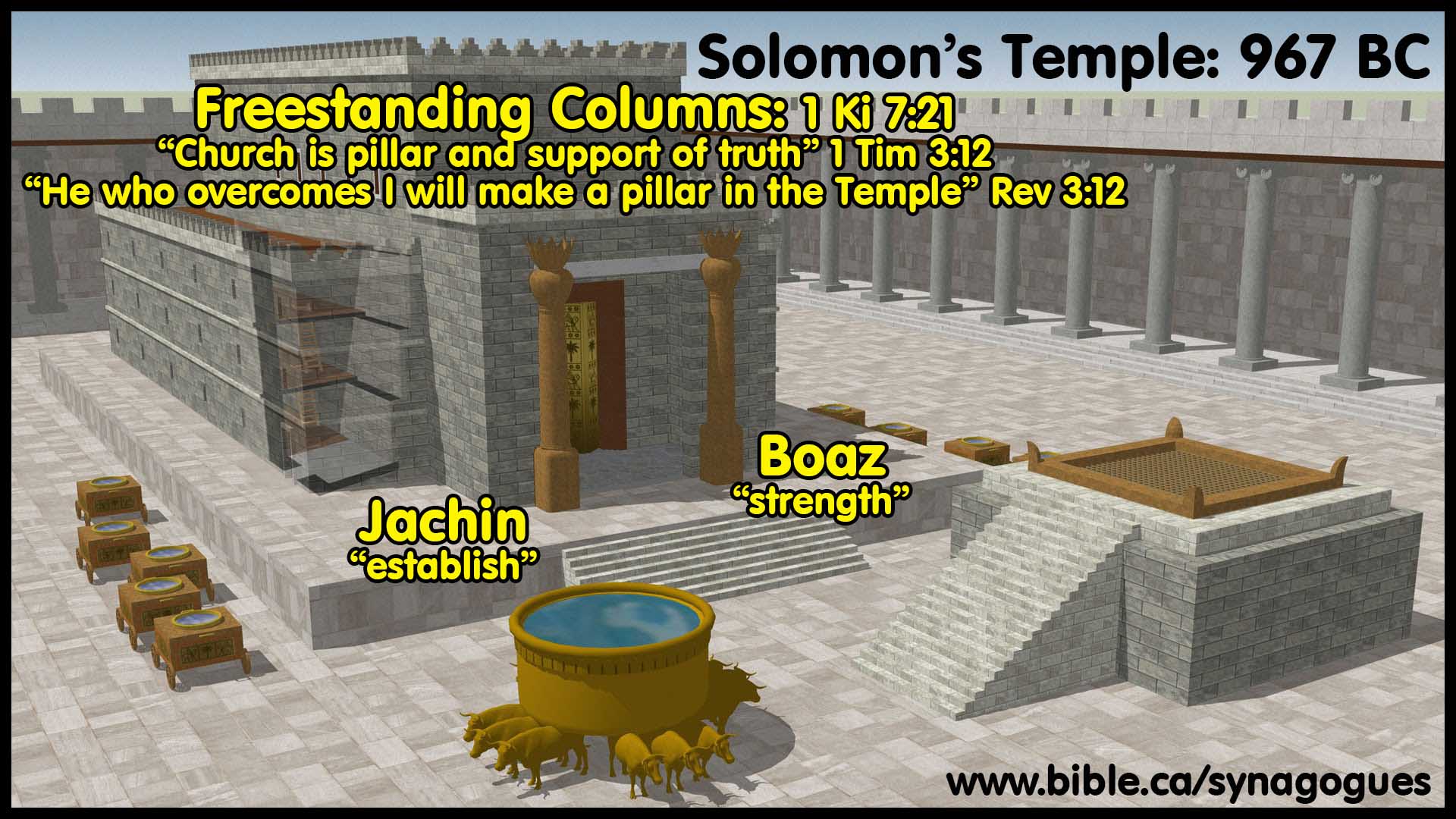
a. See also: Freestanding Columns: Antitype of Christians and the church
b. The bottom portion of the “drum” columns were found in situ.
c. The four columns at each corner were plastered red which can still be seen today.
d.
During the first Jewish war when the city was under attack by the
romans, the Jews removed the synagogue columns (because
they were freestanding and without a roof easy to move) and used them as
reinforcement for the city gate.
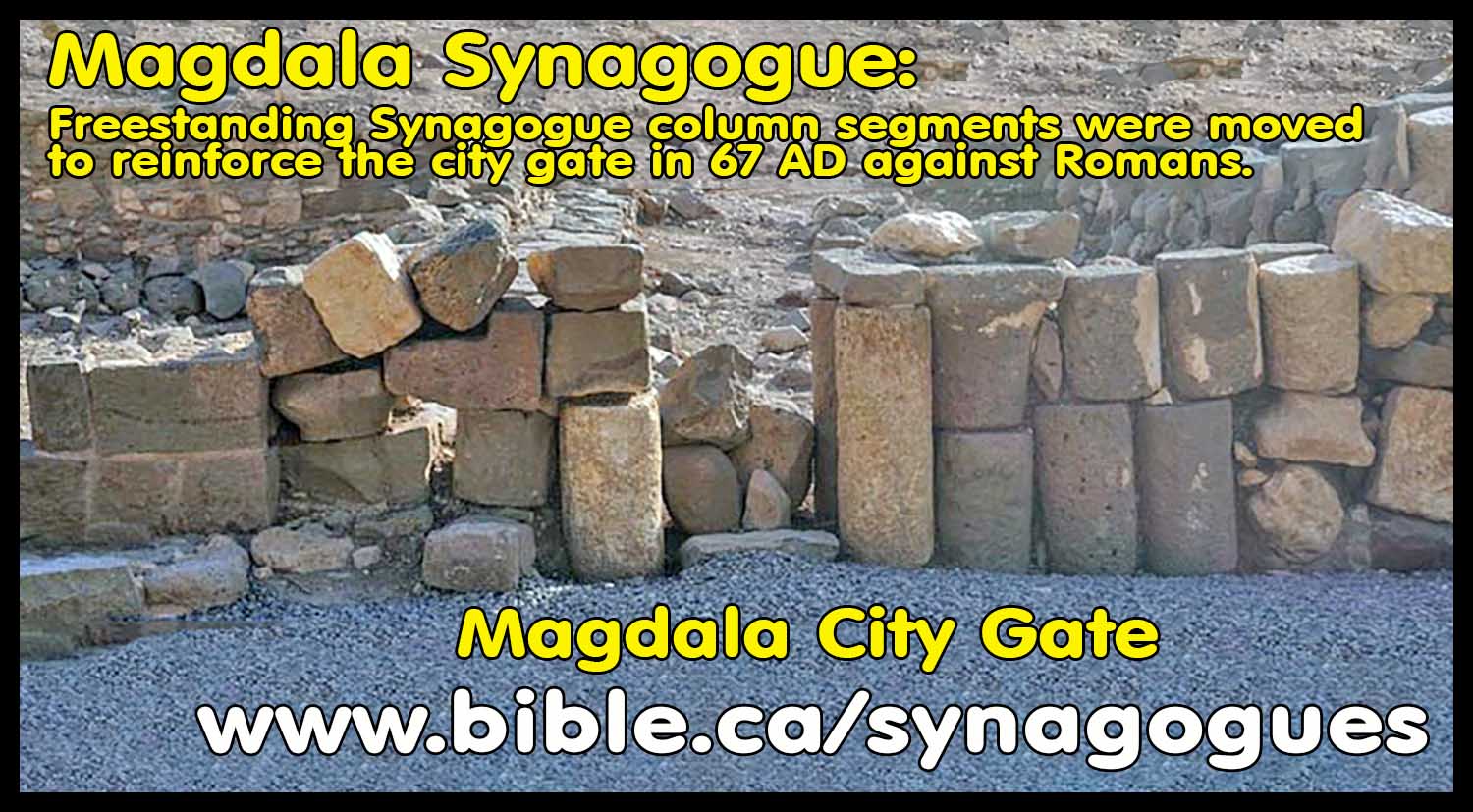
3. Nearly square, bench seating
a. See also: Synagogue Benches: Metaphor of Equality in Christ
4. It had a niche for the Ark of the Scrolls wooden cabinet (Torah Shrine)
a. See also: Niches & Ark of The Scrolls: Prototype of Church Apse
b. This niche was located near the entrance door.
c.
Pictured below is the Torah Niche at Gamla, similar to Magdala:
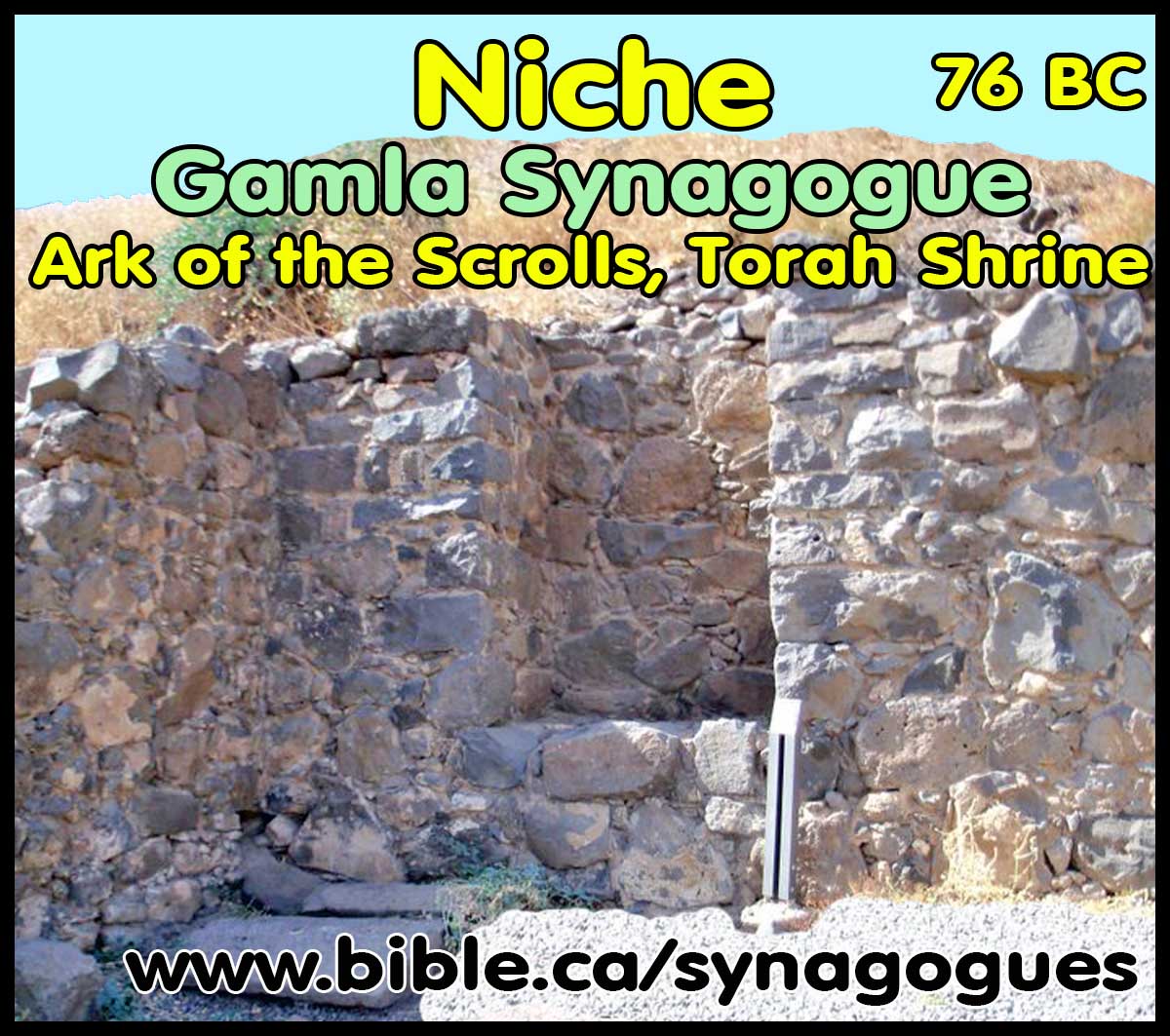
5. Table of the Scrolls with heart shapes on it
a.
See also: Heart-Shaped
artwork in ancient synagoues
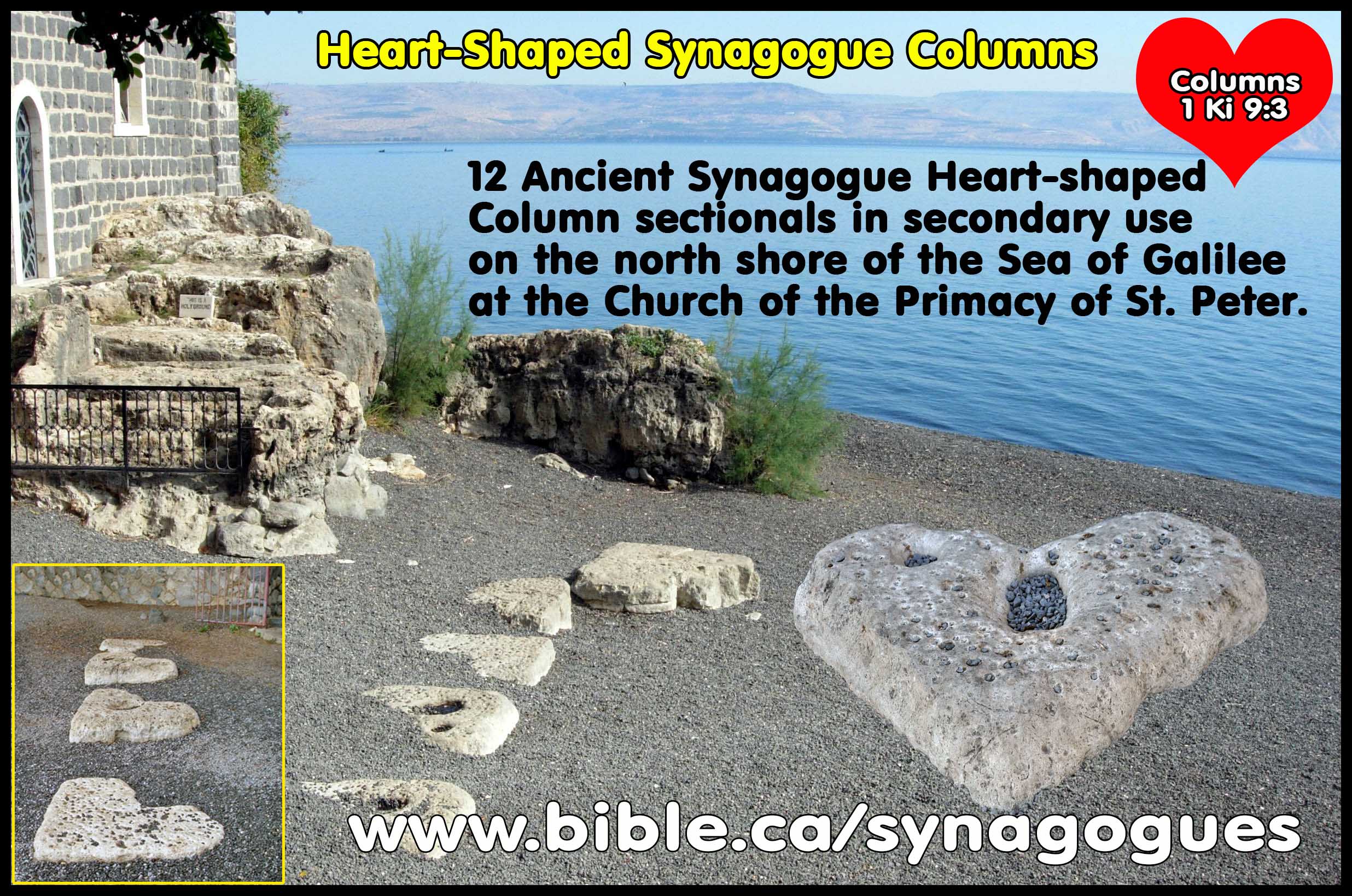
b. See also: Table of the Scrolls: Prototype of Communion Table
c.
This stone table for setting the Septuagint on was found in situ.
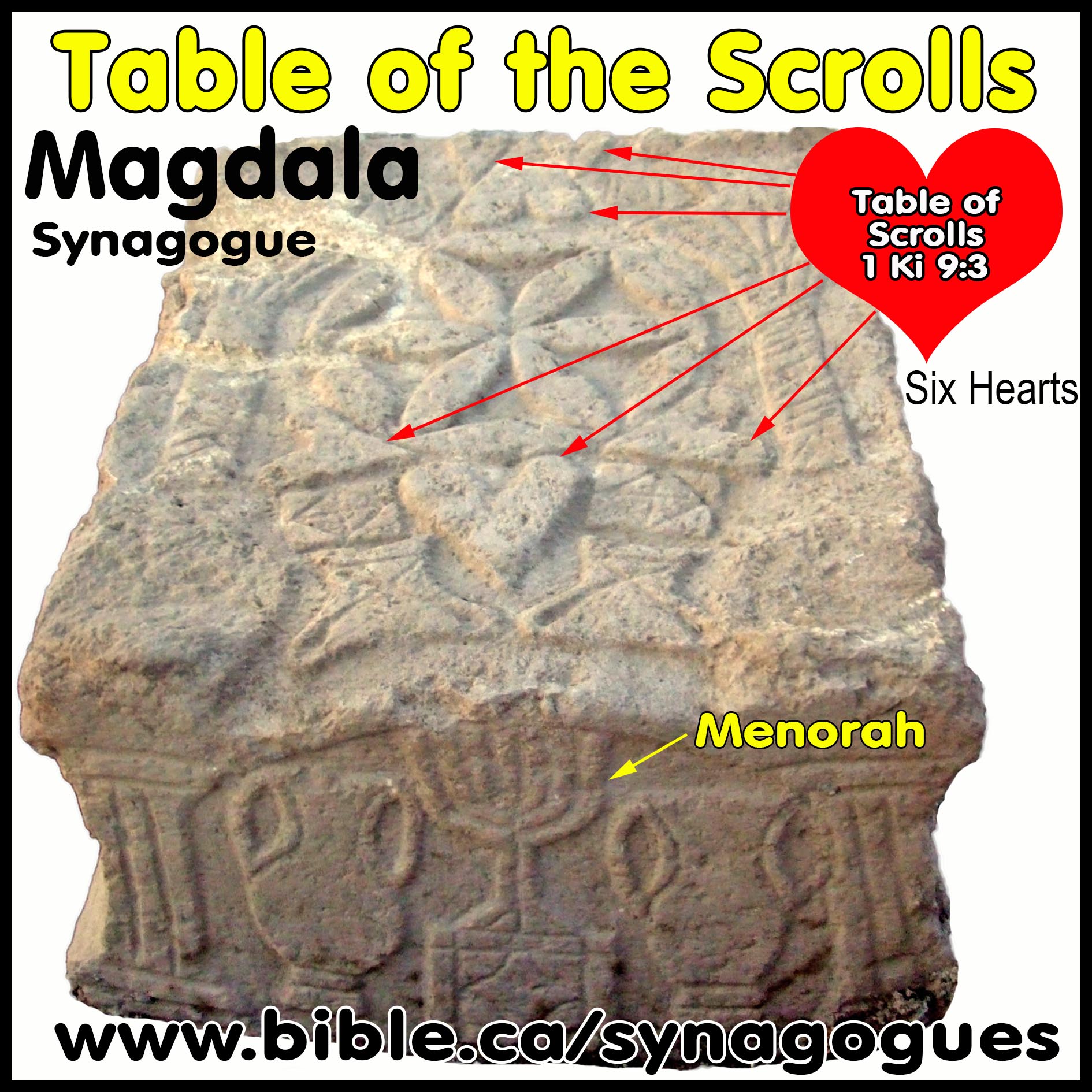
6. “Migdal I: In the north-west part of the Migdal site, a structure identified as a synagogue of the Second Temple period (50 BCE-100 CE) was recently discovered (excavated by Dina Avshalom-Gorni and Arfan Najjar of the IAA in summer 2009; Avshalom-Gorni and Najjar 2009). The structure consists of a complex building with a temenos, an entranceway, which served as a learning room and leads into an almost square hall, with the main entrance on the west. The main hall (the excavators termed it a 'grand reading hall') inner structure (about 120 m) has stone benches built along the walls. Two columns are revealed at each end of the west wall. The south and north walls are slightly longer than the other two (Fig. 11-8). The floor was covered by an unfinished mosaic pavement, and the walls and columns were painted with coloured frescos. A square decorated stone was found in the center of the reading hall, on a floor of pebbles and plaster, though it is not clear if the stone was found in situ (Avshalom-Gorni and Najjar 2010:7). The stone is engraved with geometric, plant, and architectural designs on all four sides and on the upper face; it has four small legs and, on the top, remains of horns on its four corners (Fig. II-13,, see below). In the first Jewish war against the Romans, Migdal became a Zealot stronghold, and the structure was destroyed by the Romans in 70 CE. ” (Ancient Synagogues - Archaeology and Art: New Discoveries and Current Research, Rachel Hachlili, p33, 2013 AD)
7. “The synagogue of Migdal I is more richly ornamented (Avshalom-Gorni and Najjar 2009, 2010): a mosaic pavement covered the floor, and the walls and columns were painted with colored fresco (plaster). A square decorated stone (50 x 60 x 50) with geometric, plant, and architectural designs on all four sides, was found in the center of the Migdal I hall. The top of this stone is a relief depicting a large six-petaled rosette flanked by a pair of palm trees with geometric motifs above and below them, some in the shape of large and small ivy leaves and lozenges (Fig. 11-13). On one of the stone's short side panels (facade, north) a seven-armed menorah with a triangular base set atop a pedestal is engraved. The panel with the menorah is divided into three symmetrical parts: the central design is a seven-armed menorah, each arm decorated with several knobs, with a triangular foot placed on a square base, decorated with a lozenge; the second part consists of two flanking vessels/amphorae; the third part is a paired architectural design, in which three columns bearing an arch flank the other items at both ends. Hence the menorah and the flanking vases appear to be enclosed in what might be the facade of a structure. This menorah is a unique find, being the only one found in synagogue decorations of this period. The other short side (the back) is decorated with several geometric designs on its upper part. Columns similar to those on the front short side divide the main part into two metopes, within which are two wheels with three half-circles under each of them. The two long sides have the same design, consisting of a cornice surmounting four arcades each enclosing a palm tree, except for the corner arcade which includes a sort of two-handled jug. “The interpretation of the stone's function has to consider the fact that its face is also decorated and was thus meant to be seen. It appears to have been used as an incense altar as the broken corners on the stone's face suggest, or as a base or stand for a table on which the Torah may have been placed for readings and as the excavators noted that the stone was found in situ it is possible that the reader knelt when reading the scroll. “The style and motifs which appear on all the panels of the stone are comparable to Second Temple period art, such as architectural items and stone tables found in Jerusalem, as well as ossuaries. The ornamentation of many ossuaries consists of a central motif flanked by other patterns, frequently rosettes. Compare especially the depiction on an ossuary which has a two-handled stylized amphora flanking a five-armed menorah, while the three columns are comparable to the design on another ossuary (Rahmani 1994:Fig. 41, Ossuaries nos. 815, 841F and L). The geometric patterns on the Migdal synagogue stone are comparable to the ornamentation of architectural fragments found at the Jerusalem Ophel site where the Theodotus inscription was discovered (see the pattern of the wheel/rosette, Weill 1920, II:Pl. XXVB, which is similar to the design on the back of the Migdal stone). Various ornamentations found on other Second Temple objects are also comparable: the decoration on the Temple Mount architectural examples, as well as the rosette and some of the designs on stone tables (Ben Dov 1982:138, 159; Avigad 1983:Fig. 185); also similar is the rosette on the Gamla basalt stone (Fig. 11-12). Aviam (2013) suggests that the Migdal stone symbolizes, in its design and ornamentation, the Temple in Jerusalem and some mystical elements, and that the block was used as a base for the Torah reading table in the synagogue. ” (Ancient Synagogues - Archaeology and Art: New Discoveries and Current Research, Rachel Hachlili, p40, 2013 AD)
Conclusion:
1. The synagogue at Magdala is certainly a place Jesus worshipped on the Sabbath along with Mary Magdala, Jairus (synagogue official) and Josephus!
2. Bible scoffers silenced ONCE AGAIN BY ARCHEOLOGY!
a. For those who say that formal synagogue buildings did not exist before the destruction of the temple of Jerusalem in 70 AD, this utterly refutes them.
b. These Bible trashers would do much better archeological research if they DID NOT outright reject the historical accuracy of the Bible when it references synagogue buildings 44 times!
c. Every time you stick a shovel in the ground in Israel YOU DIG UP A BIBLE STORY!
3. "For Moses from ancient generations has in every city those who preach him, since he is read in the synagogues every Sabbath.”" (Acts 15:21)
God said it, I BELIEVE IT, THAT SETTLES IT!!!
By Steve Rudd 2017: Contact the author for comments, input or corrections
|
Jesus your messiah is waiting for you to come home! |
|
|
Why not worship with a first century New Testament church near you, that has the same look and feel as the Jewish Synagogue in your own home town. As a Jew, you will find the transition as easy today as it was for the tens of thousands of your forefathers living in Jerusalem 2000 years ago when they believed in Jesus the Nazarene (the branch) as their messiah. It’s time to come home! |
|
By Steve Rudd: Contact the author for comments, input or corrections.
Go to: Main Ancient Synagogue Start Page
